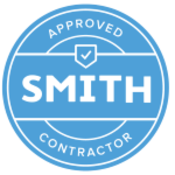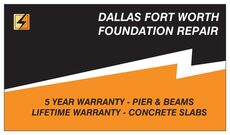- Foundation Repair
- Services
-
Service Areas
- Foundation Repairs in Collin County
-
Foundation Repair Dallas County
- Foundation Repair Balch Springs Texas
- Carrollton Foundation Repair Company
- Foundation Repair in Dallas
- Foundation Repair in Duncanville Texas
- Foundation Repair Farmers Branch Texas
- Foundation Repair Garland
- Foundation Repair Grand Prairie Texas
- Foundation Repair Irving Texas
- Foundation Repair Mesquite Texas
- Foundation Repair Richardson Texas
- Foundation Repair Rowlett Tx
- Foundation Repair Seagoville Texas
-
Foundation Repair Dallas Historic District
- Foundation Repair University Park Texas
- Pier & Beam Repair Dallas Historic District
- Foundation Repair Highland Park
- Pier & Beam Repair in Junius Heights
- Foundation Repair Lakewood
- Foundation Repair in the M streets and lower greenville
- Pier & Beam Repair in Munger Place
- Foundation Repair Swiss Avenue Historic District
-
Foundation Repair Denton County
- Foundation Repair Aubrey Texas
- Foundation Repair Coppell Texas
- Foundation Repair City of Denton
- Foundation Repair The Colony Texas
- Foundation Repair Corinth Texas
- Foundation Repair Flower Mound Texas
- Foundation Repair Lake Dallas Texas
- Foundation Repair Little Elm Texas
- Foundation Repair Lewisville Texas
- Foundation Repair Grayson County
-
Foundation Repair Tarrant County
- Foundation Repair Arlington TX
- Foundation Repair Bedford Texas
- Foundation Repair Colleyville Texas
- Foundation Repair Euless Texas
- Foundation Repair Fort Worth
- Foundation Repair Grapevine Texas
- Foundation Repair Hurst Texas
- Foundation Repair Mansfield Texas
- Foundation Repair North Richland Hills Texas
- Foundation Repair Southlake Texas
- Recent Projects
- Customer Reviews
- Faq's
- About
CONCRETE PRESSED PILINGS
The use of concrete pressed pilings is the most widely used foundation repair method in use in the North Texas area. In the last 20 years it has become the standard for foundation repair in North Texas. These concrete cylinders are pressed at extremely high pressure. 
 These concrete cylinders are made to withstand pressure in excess of 6,000 psi and can be driven down as deep as 50 feet. They cut their way through any roots or small rocks on their way to a solid sub-strata. Concrete pressed piers have the lowest failure rate of any repair method currently in use. Concrete piling systems have many applications other than residential home repair. Most of your bridges, oil rigs or any other applications where load bearing reliability is critical. This system of foundation repair provides very economical repair solutions with a minimal amount of disturbance to property and usually can be completed in 1-2 days. At the onset of the project any shrubs, plants and other vegetation that are in the work space will be removed from work areas and placed onto tarps and plywood that are placed around your home to protect the surrounding lawn.
These concrete cylinders are made to withstand pressure in excess of 6,000 psi and can be driven down as deep as 50 feet. They cut their way through any roots or small rocks on their way to a solid sub-strata. Concrete pressed piers have the lowest failure rate of any repair method currently in use. Concrete piling systems have many applications other than residential home repair. Most of your bridges, oil rigs or any other applications where load bearing reliability is critical. This system of foundation repair provides very economical repair solutions with a minimal amount of disturbance to property and usually can be completed in 1-2 days. At the onset of the project any shrubs, plants and other vegetation that are in the work space will be removed from work areas and placed onto tarps and plywood that are placed around your home to protect the surrounding lawn.
Excavation
Access holes for the installation of piers are excavated by hand. At this time shrubs, plants and other vegetation will be removed from the work areas.  We hand dig holes that are 2 x 2 and
We hand dig holes that are 2 x 2 and  extend below the surface four to five feet. During the excavation special care is taken to prevent the cutting of any electrical or cable lines or damage to any sprinkler system or components.
extend below the surface four to five feet. During the excavation special care is taken to prevent the cutting of any electrical or cable lines or damage to any sprinkler system or components.
If any concrete exists in the locations where piers need to be placed we break through the concrete surface to create the access holes. Any excavated dirt is taken to a protected area of the lawn and placed onto tarps that have been placed around your property to protect your home and the surrounding lawn.
Pier Installation
A pre-formed concrete cylinder (6 inches in diameter by 12 inches tall with a ¾ inch hole down the long axis) will be placed at the bottom of the hole directly beneath the grade beam. The concrete pilings are then driven into the ground using a small, quiet hydraulic ram.  The first concrete piling is vertically aligned and then pressed downward into bedrock or until refusal.
The first concrete piling is vertically aligned and then pressed downward into bedrock or until refusal. 
Using the weight of the home and the grade beam as a backstop, the ram drives each additional concrete piling further into the ground until refusal occurs, usually at 18 to 20 tons, or three times the given weight of your home at that pier location.
Leveling
During the leveling stage hydraulic jacks are used to lift the home in small increments to minimize any damage to the structure during the lifting process. The crew moves systematically, following the direction of the Field Superintendent, to create a gentle and uniform lift.
 The Field Superintendent monitors the reaction of the structure and the interior Elevation readings throughout the leveling process.
The Field Superintendent monitors the reaction of the structure and the interior Elevation readings throughout the leveling process.
Securing
Once the home reaches a level state the hydraulic jacks are removed and replaced and topped with a concrete cap. Any nominal space left between the pier and the exterior grade beam is secured with steel shims. 
The second jack is then removed and the process is repeated until all piers are secure against the exterior grade beam surrounding your home. At his time all dirt is back filled and plants are returned to their original locations.
Pressed Piling Pier Benefits
- Quickly installed
- Very Affordable
- Installs in areas with limited access
- Little or no disturbance to the site
- Easily load tested to verify capacity
- Can be loaded immediately after installation
- All weather installation
- Easy to re-adjust if needed
CONCRETE PRESSED PILING DIAGRAM













